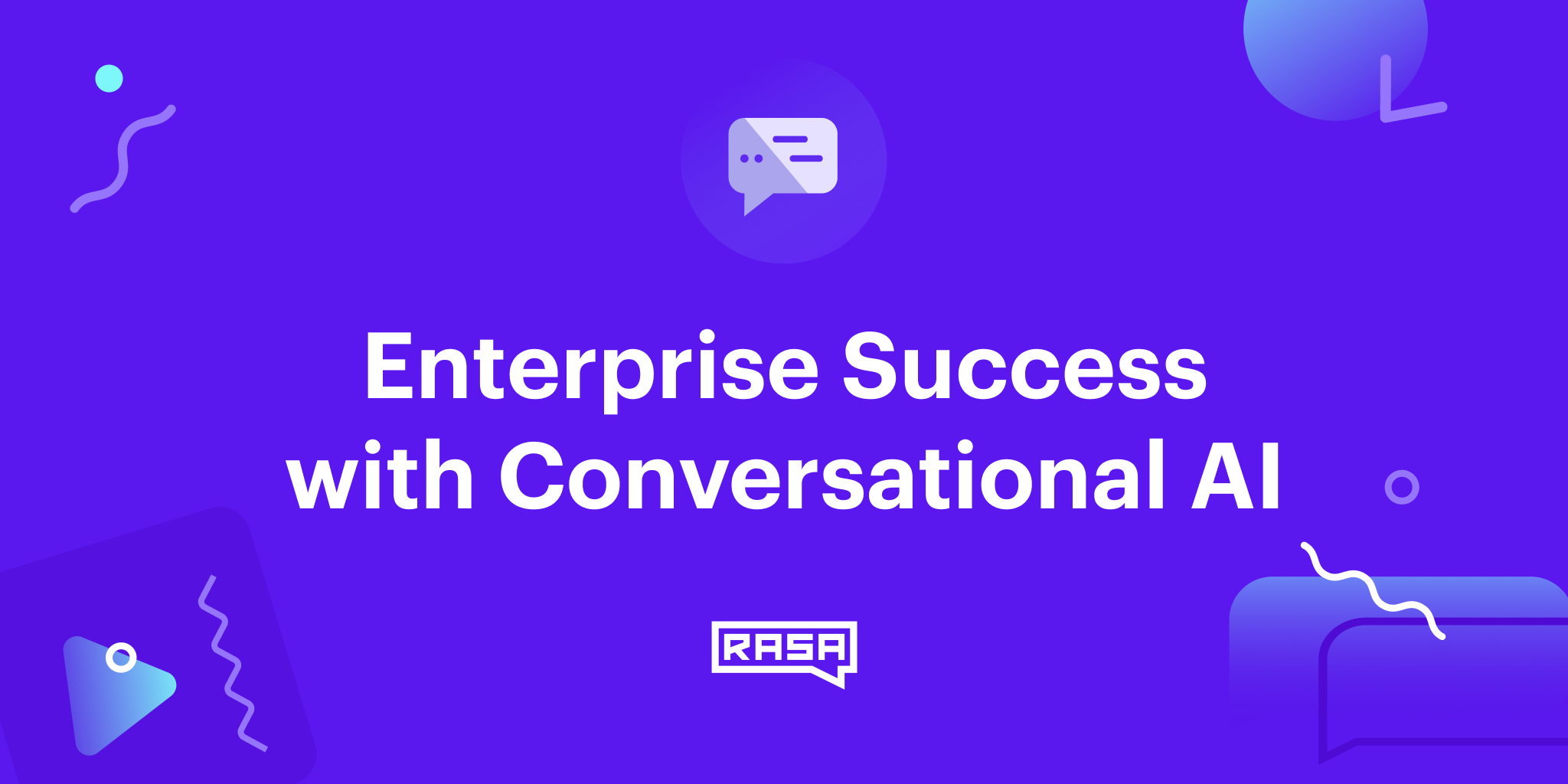February 1st, 2022
Enterprise Success with Conversational AI Webinar Recap
Lauren Goerz
We interviewed two of our clients in our webinar series “Enterprise Success with Conversational AI” to give a perspective on what it’s like to build AI assistants at scale with Rasa. For those that haven’t yet had a chance to listen in, here is a summary of the key takeaways.
Have you ever wondered what it is like to work with Rasa on an enterprise project? Just before the winter break, we interviewed two of our clients in our webinar series “Enterprise Success with Conversational AI” to give a perspective on what it’s like to build AI assistants at scale with Rasa. For those that haven’t yet had a chance to listen in, here is a summary of the key takeaways.
Our first guest was Miles Lynam-Smith, Senior Manager of Technology and Innovation at Deutsche Telekom, a German telecommunications company. Deutsche Telekom is using Rasa as a part of their virtual agent, Frag Magenta (“Ask Magenta” in German). Frag Magenta is a customer-facing AI assistant that can help Telekom customers get answers to questions such as ‘how high is my bill,’ ‘renew my contract’, and ‘set up my e-mail’. Below are three tips Miles shared about how he and the Telekom team evaluated Rasa in the vendor selection process.
-
Know why you are buying open source technology
One of Miles’s first business tips is to learn about open source business models, and to know what you are purchasing from Rasa. “The value that Rasa gives you is keeping these tools, and indeed more the entire framework, up to date with modern dependencies and modern conventions so that you are allowed to focus on the far more important job of serving and looking after your customers.” [4:41] A Rasa Enterprise subscription is more than a software package with enterprise features. It also includes ongoing support. -
Align your development philosophies
Another tip from Miles is to “Focus on the beauty of conversational driven development, and the beauty of it is that the customer decides.” [8:02] Both Deutsche Telekom and Rasa hold the same belief that Conversation Driven Development is an important practice and that development should be customer-led, not process-led. -
Understand why Rasa is a differentiator in the marketplace
Miles encourages business leaders to take the time to understand why Rasa is a strategic product and not a utility product. He explains that “Rasa allows companies to create differentiated products in their marketplace [...] You can take the product and make it as you like it, you can personalize it as you like it, you have more control.” [32:50] For Deutsche Telekom, this was the unique selling proposition (USP) of Rasa.
Our second Webinar featured Wayne Foley, Senior Software Development Manager at Providence, an American healthcare company. At Providence, Wayne is part of the Digital Innovation Group (DIG), an internal digital incubator. His team used Rasa Enterprise to launch Grace, Providence’s customer-facing assistant. Grace was critical during the pandemic. She enabled 6M+ patients to get information quickly from a trustworthy source. Below is a summary of how Wayne validated Rasa Enterprise as the right choice for his team.
-
Validate that Rasa can scale
One of Wayne’s top priorities was to validate that Rasa is the right partner to help Providence realize their potential in conversational AI at scale. “We worked with Rasa during a POC, it took about a month to kind of validate that this was likely possible with them. They were extremely hands-on, we had status meetings every week, we had a slack channel where we had tons of questions, we went through a lot of training on their platform, it was a really pleasant experience and an awesome POC. At the end of it, we were able to have a lot of confidence that this platform was going to work for us going forward.” [9:40] -
Validate that Rasa delivered the best conversational experience
Providence also had to validate that Rasa had superior NLP/NLU and machine learning capabilities. In Wayne’s own words, “The reason we wanted to get into a POC with Rasa was because the existing stack was very deterministic. It had a very fixed workflow in dialogue management, and we weren’t really able to switch parts of the conversation or work very well with multi-turn kind of conversations where you might have three different things in one utterance, or have a user that wants to do as three different tasks, and be able to context switch between these things. So we were looking for a solution that could do that, and Rasa certainly could.” [7:25] -
Validate that Rasa is compatible with Providence’s DevOps workflows
Providence’s workflow was important when choosing a vendor. Since Grace talks to private networks and handles personal information) (PI) such as health data, Providence has a huge security responsibility. “Being able to take Rasa and put it in our environment and our kubernetes cluster and run it as an open source project helps us with our security footprint as well as just making sure we are in control of all of those things.” [21:32]
We would like to thank both Miles and Wayne for taking the time to share their journey with Rasa. Their industry experience and laser focus on user-centric design and development is something we can all learn from. If you want to learn more, you can access the webinar links and other related resources below.
